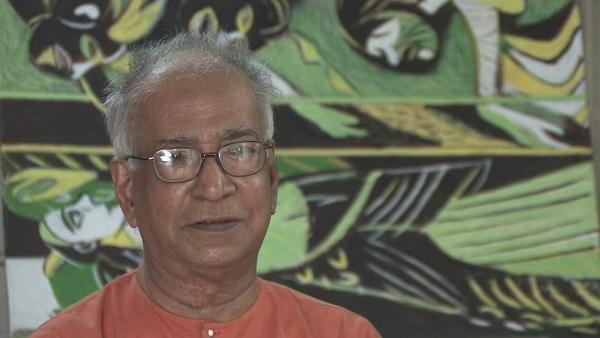NEXT STORY

Mahé’s political underground – ‘I didn’t land in jail at that time!’
RELATED STORIES

NEXT STORY

Mahé’s political underground – ‘I didn’t land in jail at that time!’
RELATED STORIES


|
Views | Duration | |
|---|---|---|---|
| 1. Childhood in Kerala | 1 | 405 | 03:07 |
| 2. Mahé, a ‘comic town’. Silk, schools and... | 136 | 03:51 | |
| 3. School in Mahé | 1 | 79 | 03:07 |
| 4. Mahé’s political underground – ‘I... | 86 | 02:10 | |
| 5. Wood sculptures, temples and study in Mangalore | 118 | 03:11 | |
| 6. Discovering the art of the rest of the world | 87 | 02:43 | |
| 7. From Economics at Presidency College, Madras to the Quit India... | 61 | 03:56 | |
| 8. The Madras Art School, Devi Prasad and a glass of scotch! | 112 | 03:37 | |
| 9. My father’s visit and getting sent to prison | 63 | 05:04 | |
| 10. Release from prison, Gopal Reddy and going to Santiniketan | 68 | 04:26 |

By that time in British India the school system was changing into what they call secondary school certificate, SSLC what they call. While here the earlier system of the matriculation was still current. And it was after 10 years of study. And they probably found that many of the people have to find employment outside this small town. So they had to be qualified in degrees that will entitle them to such employment. That’s how the whole thing started. But then it’s true, those people who studied in this school, they wanted to continue their studies let’s say in Paris, it used to be free. I mean they will sort of support the whole thing and then there were quite a few people who did go to Paris for study and some of them have also made a mark on the field of literature. But then it didn’t happen in my case anyway. So after I, we moved to Mahé then I should have been at that time about 10 years old, a little probably earlier. Then when I was 10, I joined this school in what they called the First Standard. In those days that was possible, nowadays it is not. And all my background was what I had learnt through tutors at home. But then since my brother was the kind of the coordinator of the library and things of that kind, so there were lots of books in the house. So I knew a lot of things more than the students of that level could know, so it was easy for me to get through. And then the next I think 6 years I went through in this school. And this school was small, it had only about I think 125 students or something of that kind. But then it had a good reputation because in the matriculation examination, at least in the 2 years previous to my graduation all the people were toppers in that matric. The difference between the SSLC and the matriculation examination in those days was the matriculation examination followed the old British system of essay type questions: you wrote essays. While in the SSLC, they were trying to make it simpler, small questions, small answers, this kind of thing. So at that time we did fairly well.
KG Subramanyan (1924-2016) was an Indian artist. A graduate of the renowned art college of Kala Bhavana in Santiniketan, Subramanyan was both a theoretician and an art historian whose writings formed the basis for the study of contemporary Indian art. His own work, which broke down the barrier between artist and artisan, was executed in a wide range of media and drew upon myth and tradition for its inspiration.
Title: School in Mahé
Listeners: Timothy Hyman
Timothy Hyman is a graduate of Slade School of Fine Art, London, in which he has also taught. In 1980 and 1982, he was Visiting Professor in Baroda, India. Timothy Hyman has curated many significant art exhibitions and has published articles and monographs on both European and Indian artists.
Duration: 3 minutes, 8 seconds
Date story recorded: 2008
Date story went live: 10 September 2010